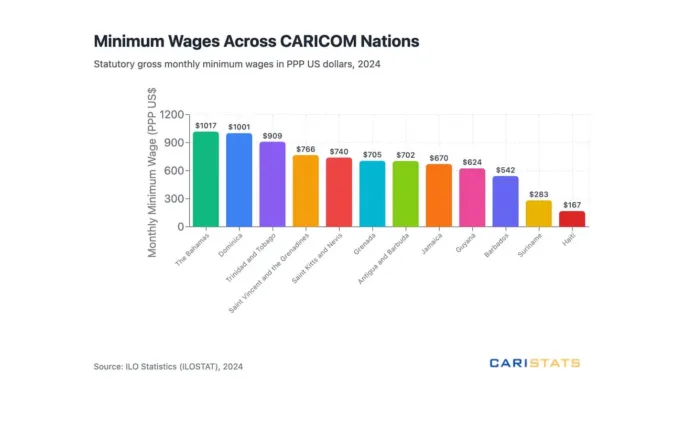Minimum wage levels across CARICOM reveal significant disparities in worker compensation standards throughout the region. According to 2024 ILO Statistics, monthly minimum wages range from over $1,000 to under $200 when adjusted for purchasing power parity (PPP).
The figures are presented in PPP dollars, which adjust for differences in the cost of living between countries, providing a more accurate comparison of what these wages can actually buy in each nation. This means the numbers reflect the real purchasing power of minimum wage workers rather than simple currency conversions.
The Bahamas leads the region with a monthly minimum wage of $1,017 PPP, closely followed by Dominica at $1,001. Trinidad and Tobago rounds out the top three at $909. These higher-wage nations contrast sharply with countries at the lower end of the spectrum, where Suriname ($283) and Haiti ($167) set minimum wages well below regional averages.
Several Eastern Caribbean states show relatively strong performance, with Saint Vincent and the Grenadines ($766), Saint Kitts and Nevis ($740), Grenada ($705), and Antigua and Barbuda ($702) all maintaining wages above $700. Jamaica, despite its larger economy, falls in the middle range at $670, while Guyana registers $624 and Barbados $542.
These disparities mean that a minimum wage worker in The Bahamas has over six times the purchasing power of their counterpart in Haiti, illustrating how national economic policies and conditions significantly affect workers’ economic realities.


